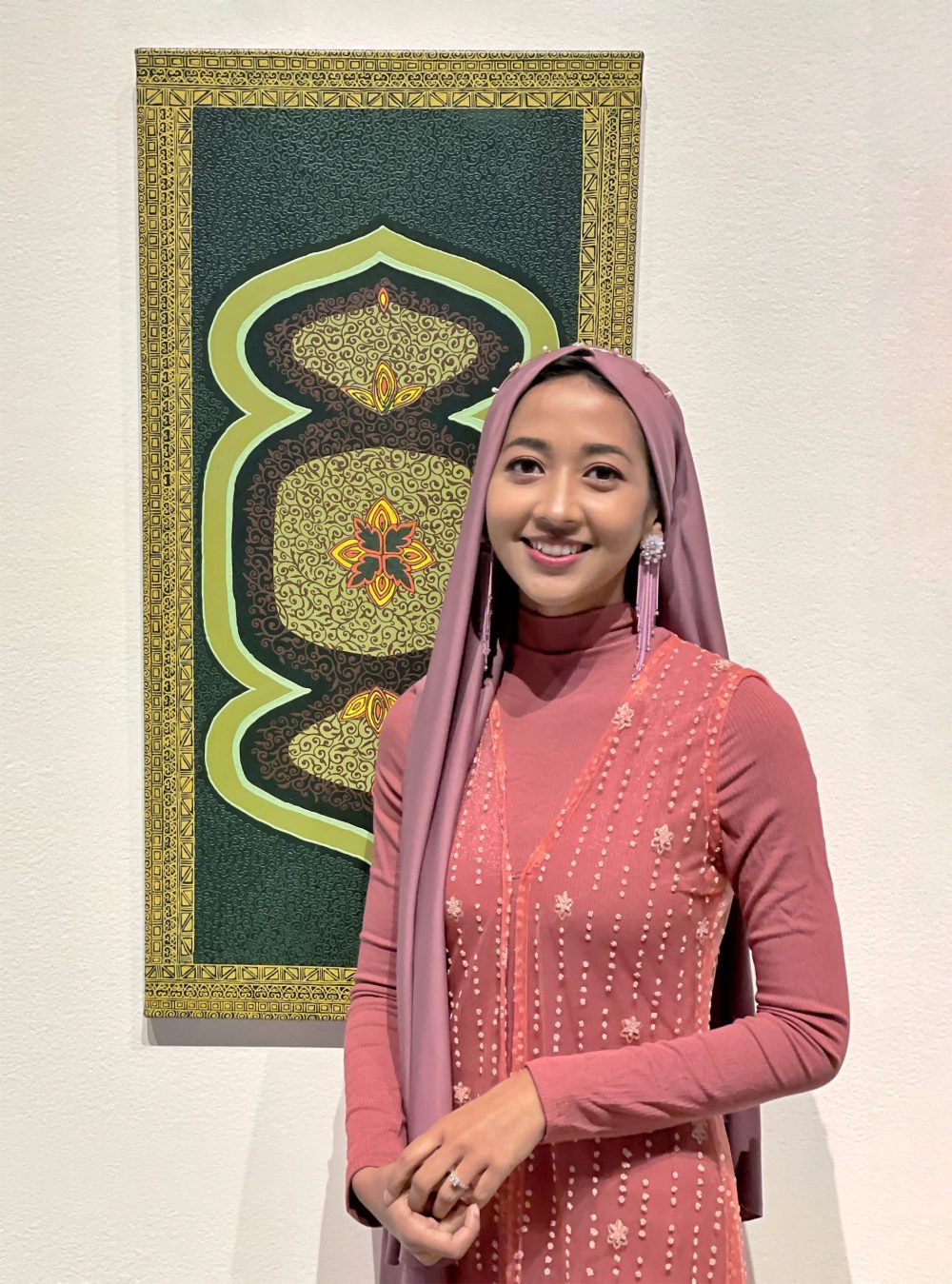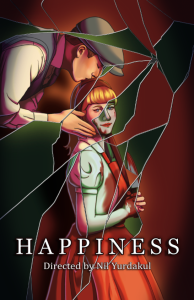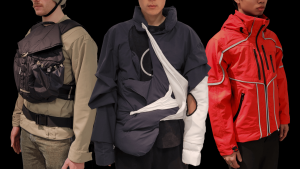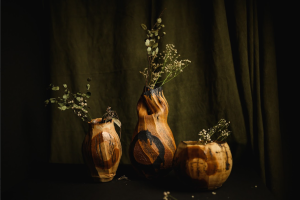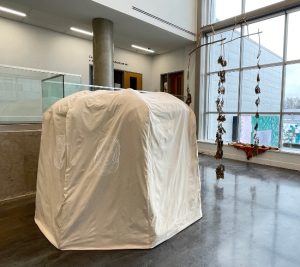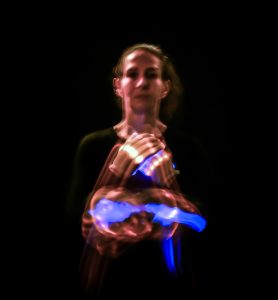Bridging Threads
Faria Firoz
See it On Campus: Level 2
Visitor InfoECU Award Recipient
Opus Art Supplies Graduation Award MFA – Honourable Mention
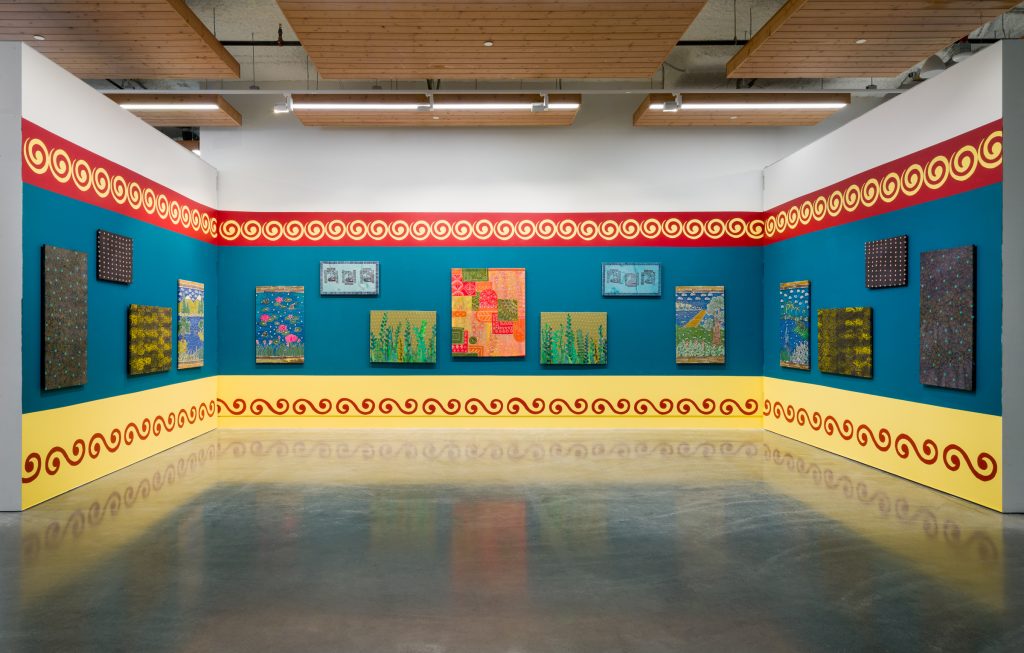
My work explores the transformation of communal textile art practices resulting from migration and resource constraints. The textile installation work delves into the reimagining of traditional tools by utilizing locally available materials to create non-traditional tools that still produce similar marks, symbols, and patterns on textile. Through techniques like beading, dyeing, and block stamping on worn fabric, I investigate how traditional Bangladeshi textile methods are adapted when faced with limited material and resources.
Key Concepts
Land, Memory and Traditional Tools
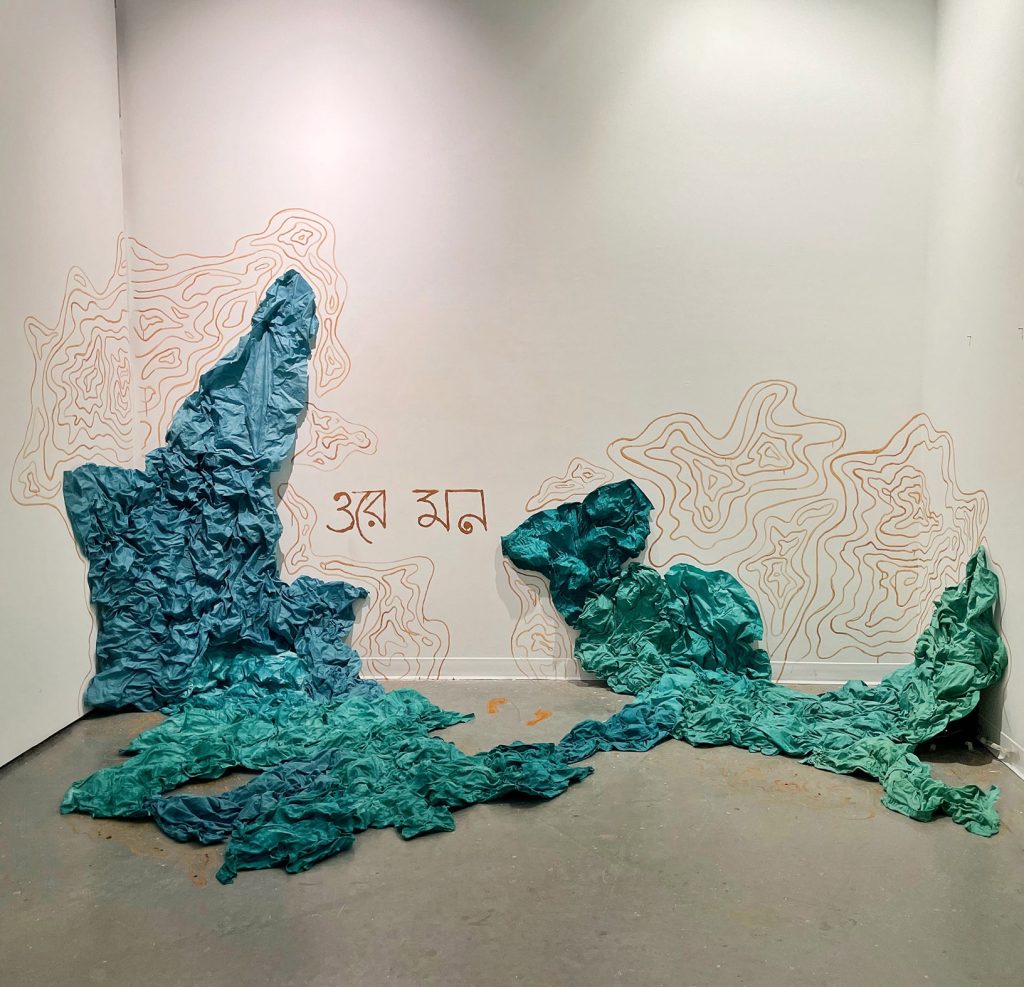
Moving from Bangladesh to Canada marked a significant life change for me. Leaving behind the familiar community, kinship, culture, and traditions, I faced the challenge of adapting to a new environment. Throughout my MFA program, I explored the impact of migration on my sense of belonging and identity. Drawing on traditional wisdom and experiences, I aimed to create works that reflect the hybridity of my two cultures. This journey helped me identify the challenges of acculturation, which became a central theme in my artwork.
Ore Mon, created in my first semester of MFA, reflects my struggles in adapting to the new environment. As I explore lakes, rivers, and mountains, I instinctively seek connections to my homeland. I often find echoes of familiar landscapes, triggering memories of Bangladesh. The installation explores the tension between foreignness and familiarity in these new lands for me.
Most of the textiles material used in my work are worn saree that were donated generously by elders from my community. By using preloved fabric as foundation, the addition of beads and stitching radiates care and significance to each of the installations.
As I explored textiles further, I examined how craft practices change without communal support and adequate materials, especially for migrants. Preserving these crafts fosters belonging and community cohesion in new environments. Bangladeshi folk art, deeply rooted in cultural identity, faces challenges in diaspora continuity. Through my work, I aim to preserve and practice traditional Bangladeshi handcraft skills learned during my upbringing.
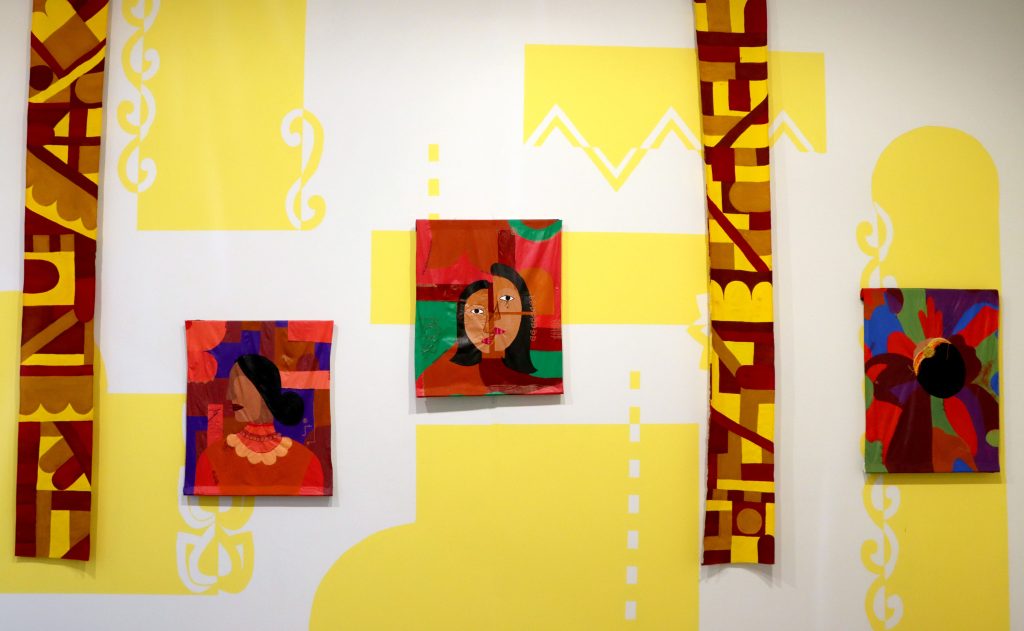
As the program progressed, I began using traditional approaches shaped by my upbringing and my mother’s teaching in my works. However, as I started focusing on recreating works reminiscent of those crafted in Bangladesh, I soon realized that replicating my past crafts without traditional tools was challenging. Despite attempting to order materials from Bangladesh, the limitations of resources became evident when the expected materials didn’t arrive. However, this setback offered an opportunity for material exploration, shifting my objective towards finding substitutes for traditional tools that could produce similar results. I started making my own tools using the materials I could source locally.
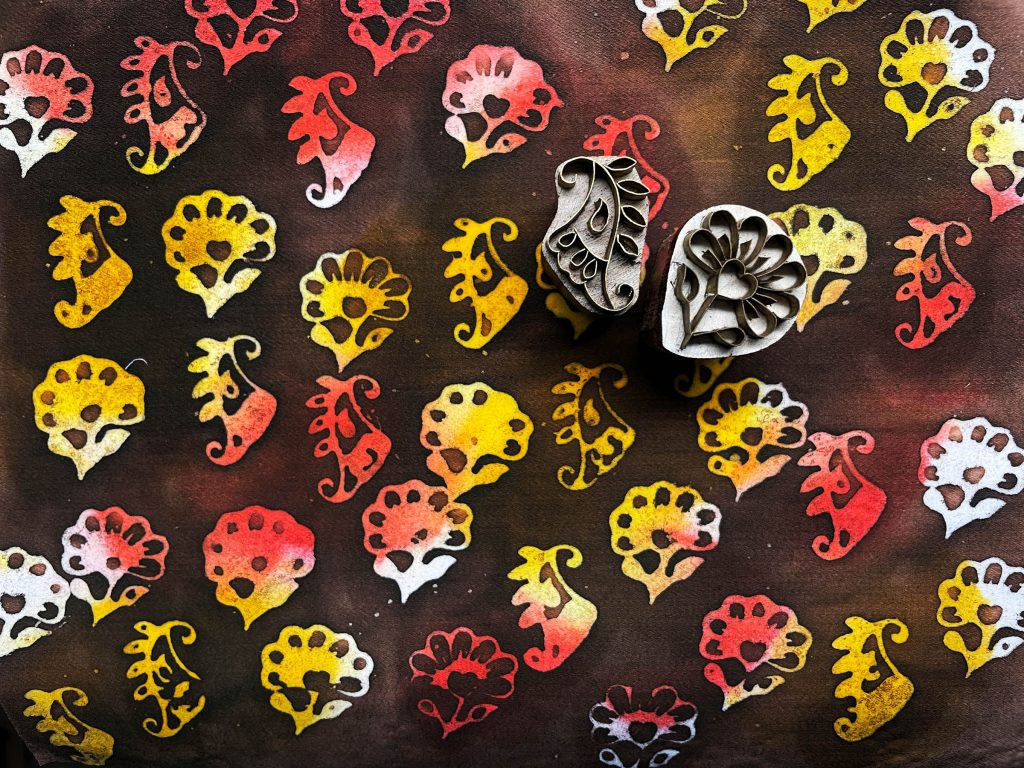
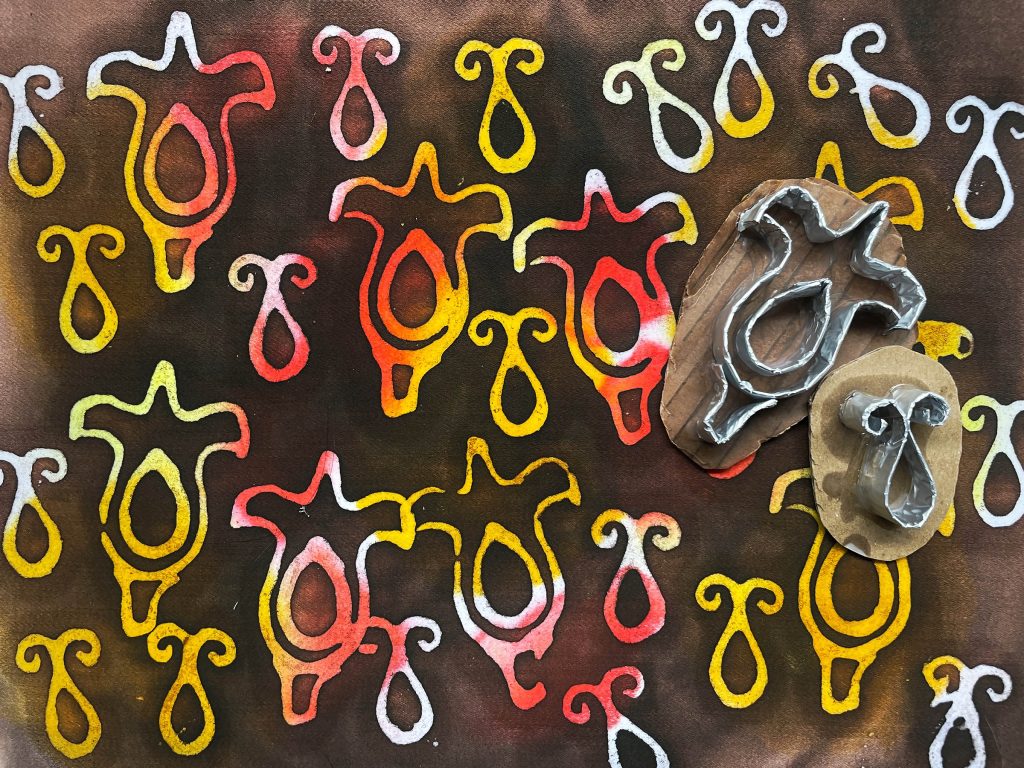
Exploration of unconventional materials and alternative tools lead to the crafting of non traditional mark-making instruments. Due to the unavailability of the blocks that are used for Moom Batik, I had to make my own by folding aluminum foils and shaping them to create my own design blocks, which I then used to stamp hot wax on fabrics for subsequent dyeing. This unconventional material exploration not only allowed me to create unique patterns but also imbued them with more personal meaning compared to store-bought manufactured ones.
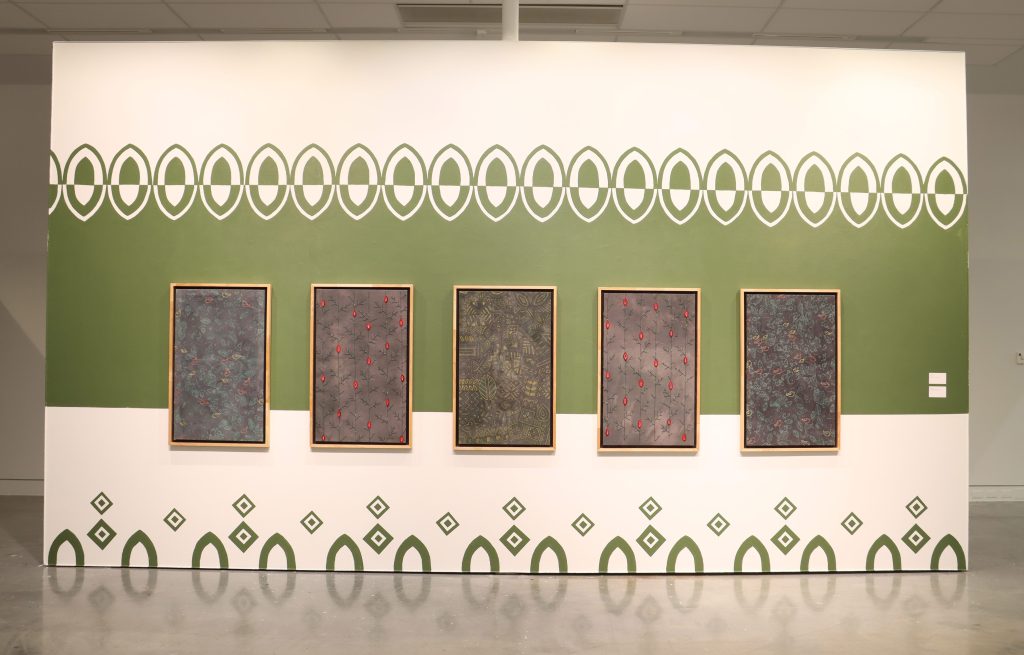
In the installation “Biborton: Shift of Being,” I employed unconventional techniques to create Kantha Stitching, Karchupi Embroidery, and Moom Batik. All the panels were crafted using tools that I fashioned myself. In the central fabric panel, some parts showcases traditional Kantha stitch, while the other half is painted to mimic the same stitch. This effect was achieved by utilizing acrylic paint combined with modeling paste, resulting in textures resembling actual stitches.
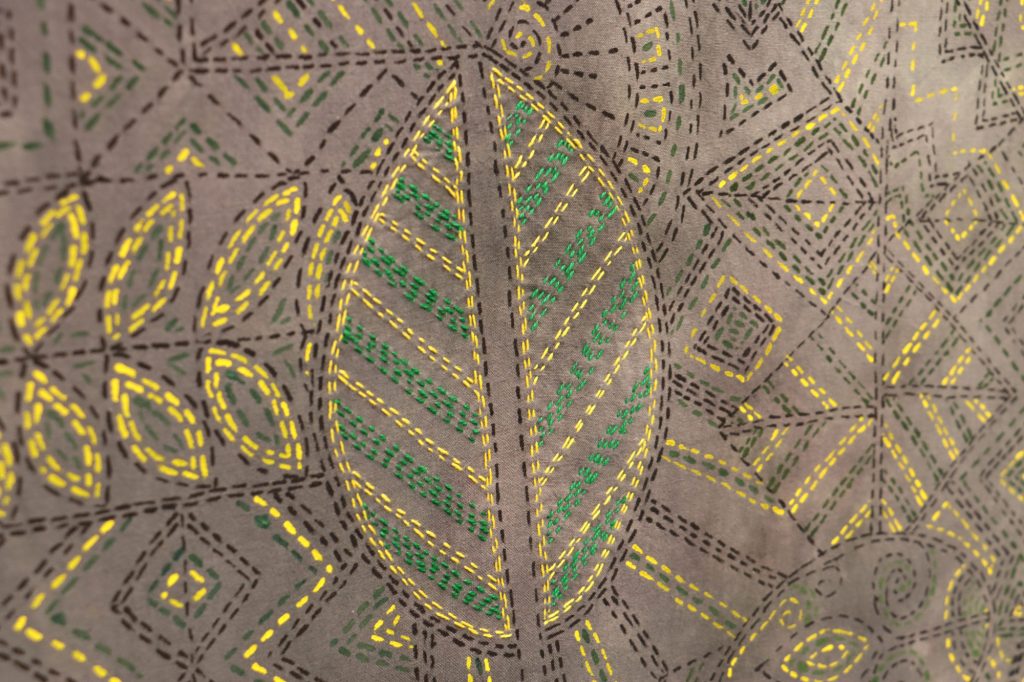
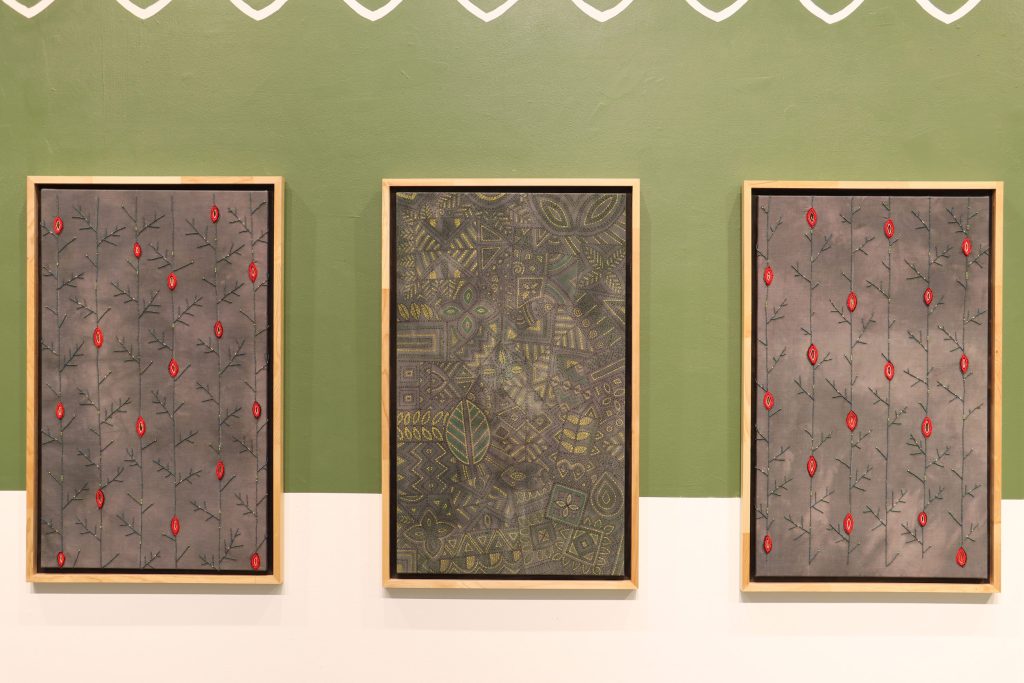
As I progressed, I delved deeper into exploring work that merges culturally diverse and conflicting material approaches, forging novel methods of creating and experiencing fiber processes.
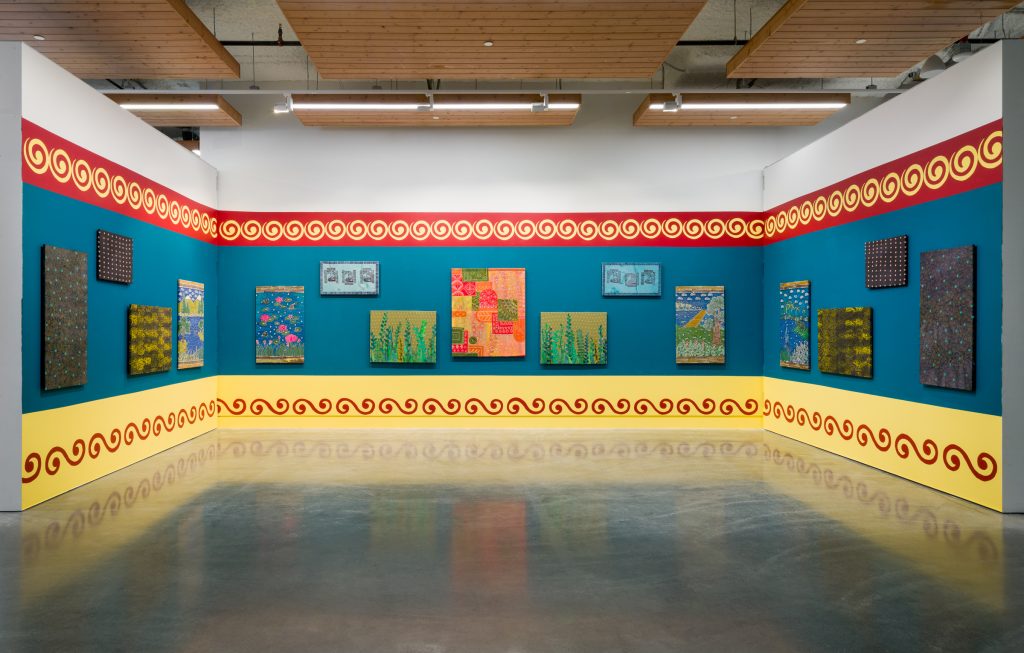
ShongRokkhon was exhibited as part of my final thesis project. Weaving together the various lessons learned throughout this program, I crafted an installation that offers a reimagined and immersive space for viewers. This culminating piece serves as a comprehensive showcase of the diverse techniques acquired through experimentation and exploration, while also incorporating materials of deep significance.
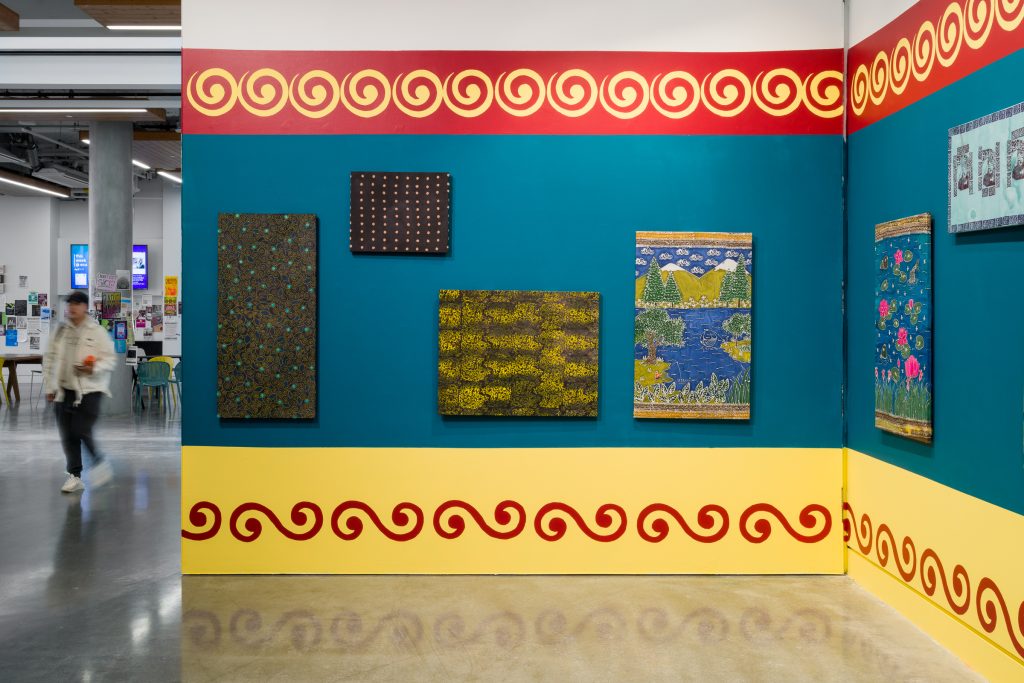
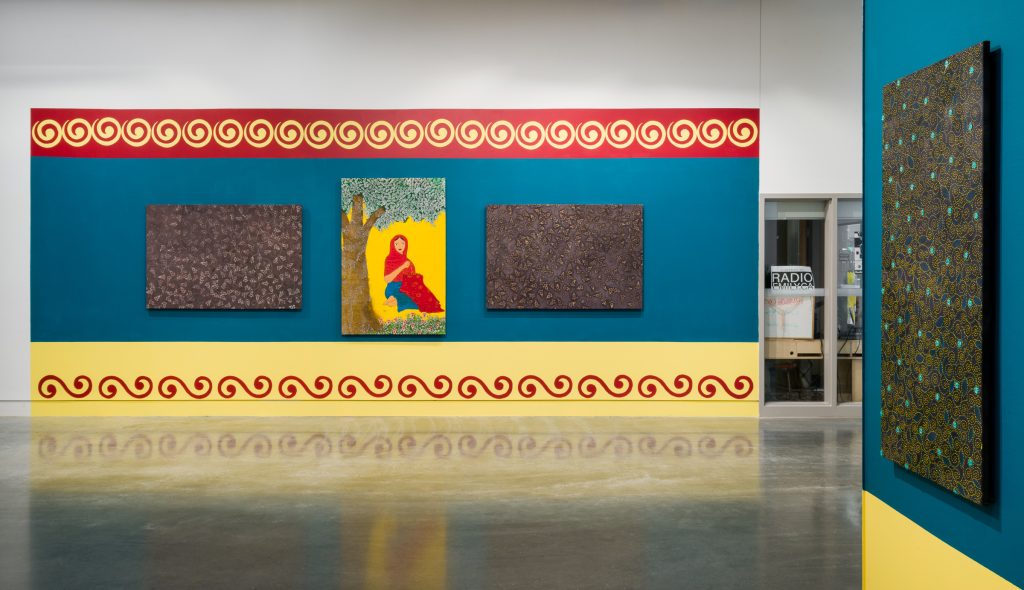
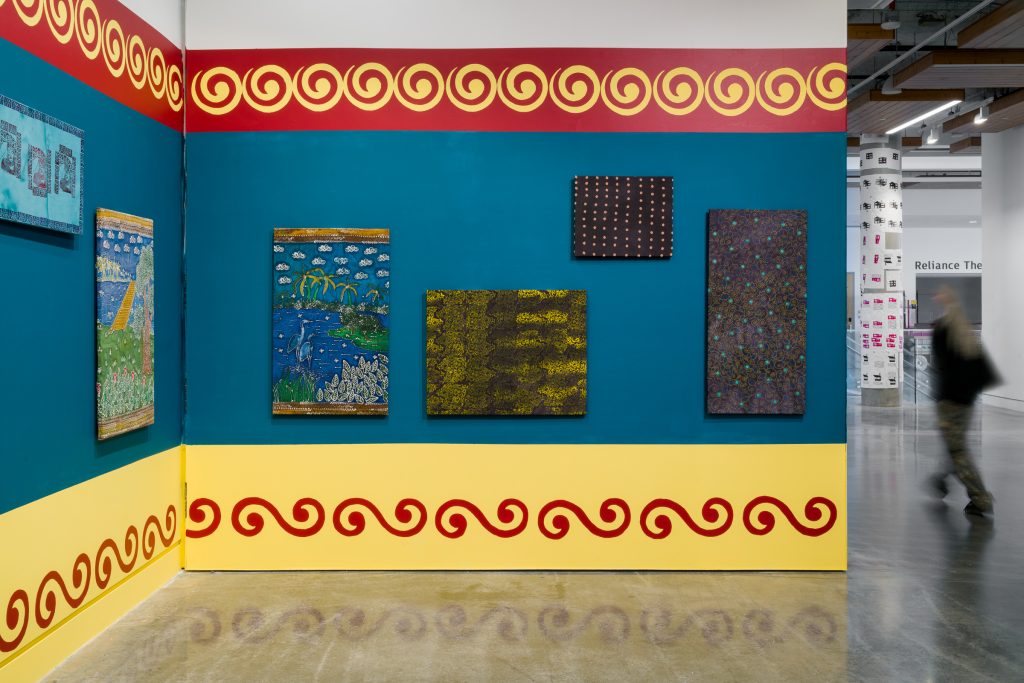
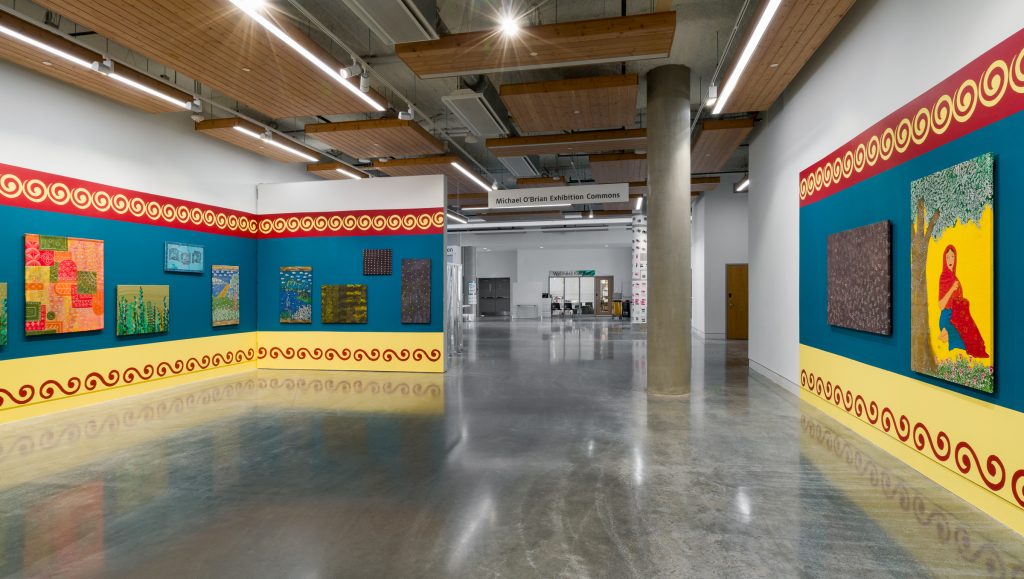
As I contemplated sharing my work more widely, questions about dissemination arose. However, as I began posting process images and installation pictures on social media, meaningful conversations ensued. This online engagement filled a gap, connecting me with others who shared similar cultural backgrounds and experiences, which I had missed due to my distance from the diaspora at Emily Carr University.
The response on social media was overwhelming, with many expressing interest in learning the unconventional methods I used to create traditional textile materials. Inspired by this interest, I organized workshops where other South Asian women could learn these new methods.
Before the workshops, inquiries poured in about materials and prior knowledge, highlighting the barriers many faced. These questions resonated with me, echoing the very issues that had driven my research. During the workshops, conversations addressed the loss of tradition and heritage due to migration, with first-generation migrants striving to preserve their culture despite challenges such as material scarcity. Discussions also touched on the sense of displacement and the workshops provided a sense of home and belonging, fostering relearning and storytelling among the South Asian diaspora.
The workshops fueled my passion for exploring materials and honoring traditional crafts. Continuing them allows me to expand my community, bridging the isolation I once felt and embracing a sense of communal spirit. This initiative offers a supportive environment where South Asian women can engage in crafting, share knowledge, and find belonging together.
